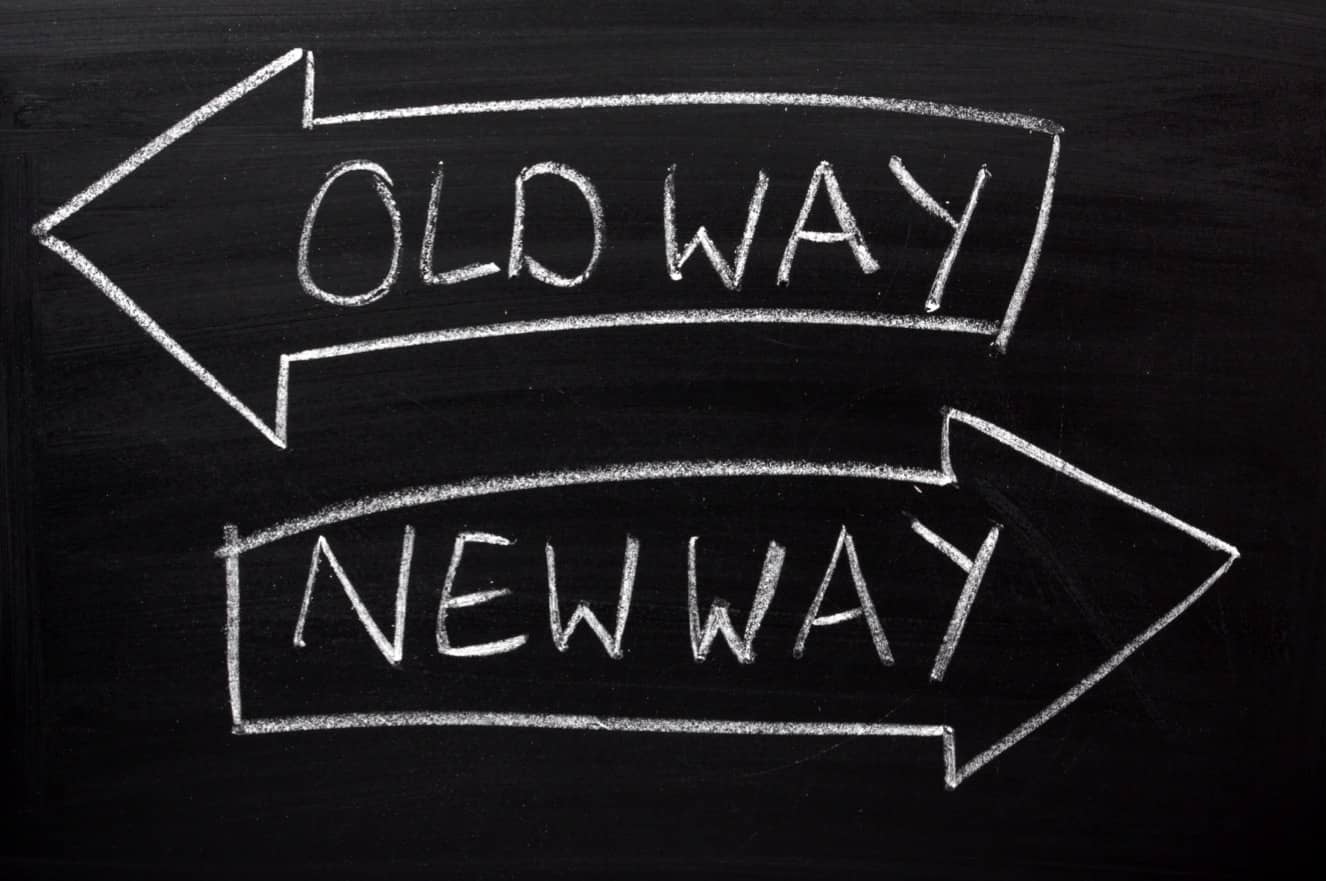
Rethinking the building code means including performance objectives to limit damage and increase redundancy
Mary C. Comerio (University of California, Berkeley) explains why disaster recovery must begin well before a disaster occurs. The goal is to reduce the potential for damage beforehand by making housing delivery (e.g. capabilities and the physical, technical and institutional infrastructures) both more resilient and more capable of building back after disasters.
More
Why policymakers should create mitigation roadmaps for construction and real estate
To achieve net zero GHG emissions by mid-century (the Breakthrough Agenda) it is vital to establish explicit sector-specific roadmaps and targets. With an eye to the forthcoming COP30 in Brazil and based on work in the IEA EBC Annex 89, Thomas Lützkendorf, Greg Foliente and Alexander Passer argue why specific goals and measures for building, construction and real estate are needed in the forthcoming round of Nationally Determined Contributions (NDC 3.0).
More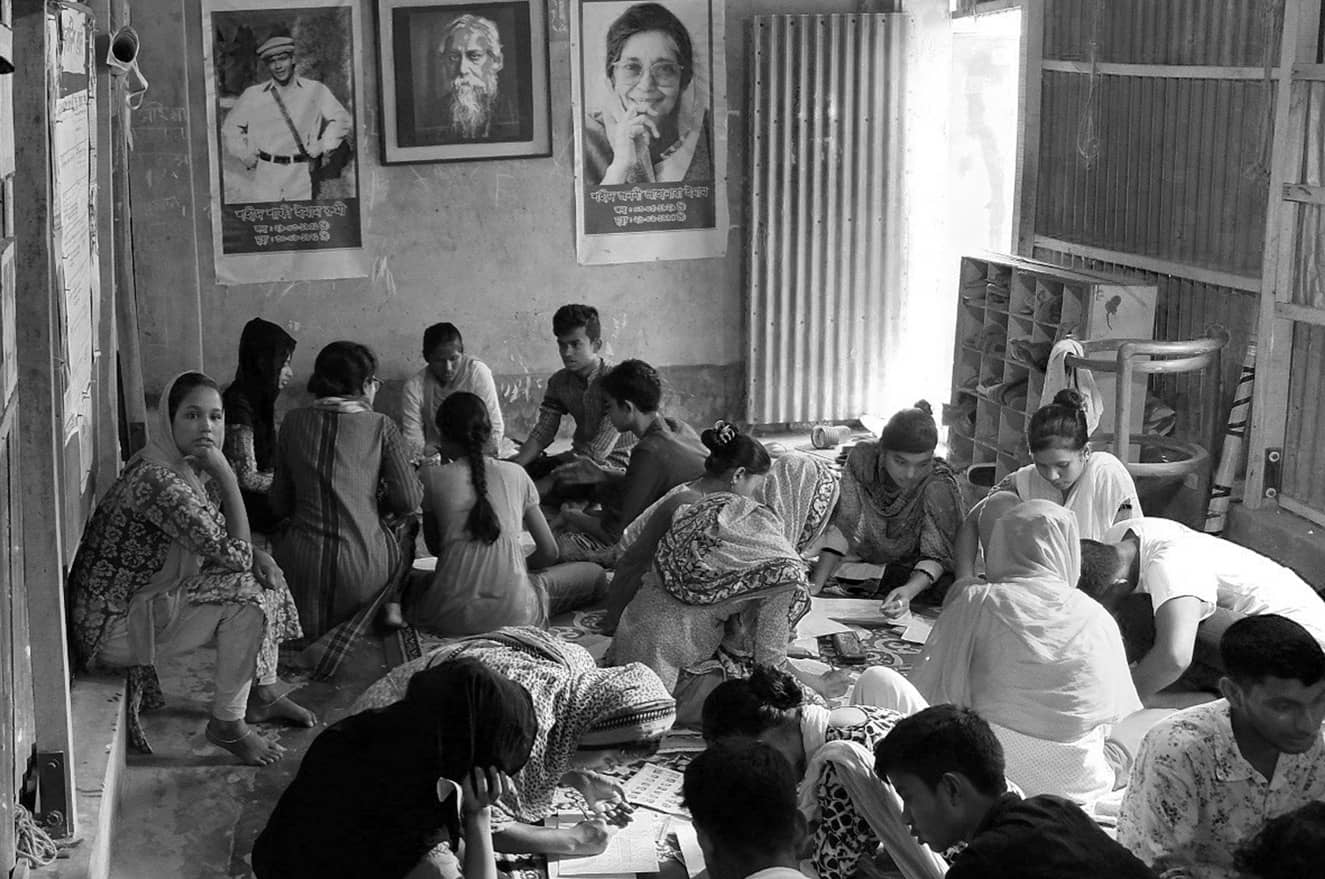
How can a self-organised initiative in an informal settlement foster community engagement and confront social issues?
While Living Labs are often framed as structured, institutionalised spaces for innovation, Sadia Sharmin (Habitat Forum Berlin) reinterprets the concept through the lens of grassroots urban practices. She argues that self-organised knowledge spaces can function as Living Labs by fostering situated learning, collective agency, and community resilience. The example of a Living Lab in Bangladesh provides a model pathway to civic participation and spatial justice.
More
Why the built environment research community is vital for policy and strategy implementation
Thomas Lützkendorf (Karlsruhe Institute of Technology) explains how the research community has helped to change the climate change policy landscape for the construction and real estate sectors, particularly for mitigating GHG emissions. Evidence can be used to influence policy pathways and carbon budgets, and to develop detailed carbon strategies and implementation. A key challenge is to create a stronger connection between the requirements for individual buildings and the national reduction pathways for the built environment.
More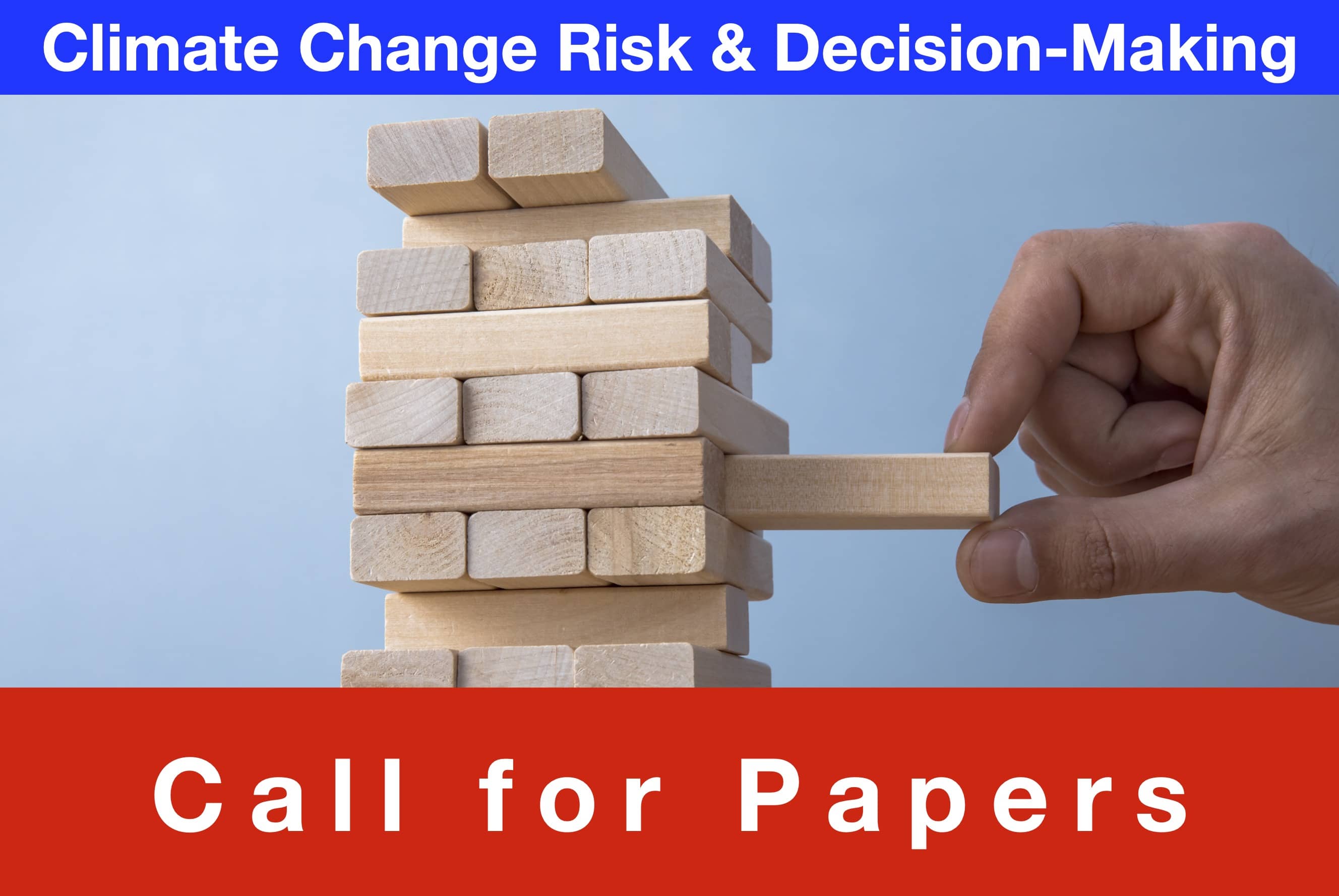
Guest Editors: Simon Foxell and Ian Cooper
Deadline for abstracts: 09 June 2025 (noon GMT)
How should built environment actors (individually and collectively) respond to the increasing risks resulting from the changes to the global and local climates? How can the sector improve its understanding of risk factors and potential responses? What obligations do decision-makers have to act and explain their actions relating to avoidance and mitigation of risk? What processes and shared understandings are needed for identifying, communicating and responding to climate risks? What are the appropriate approaches to thinking about and acting on built environment risk (across a spectrum from 'probability times consequences' to 'how far is safe enough' that locate risk in a larger cultural context?
More
Why a coordinated programme of built environment research needs to be based on the public good
Gavin Killip and Kate Simpson (Nottingham Trent University) propose a coordinated research programme of field trials to create a focus for iterative learning about outcomes in the built environment, for the public good. They explain why a transdisciplinary programme is needed and seven key characteristics of the programme are proposed.
More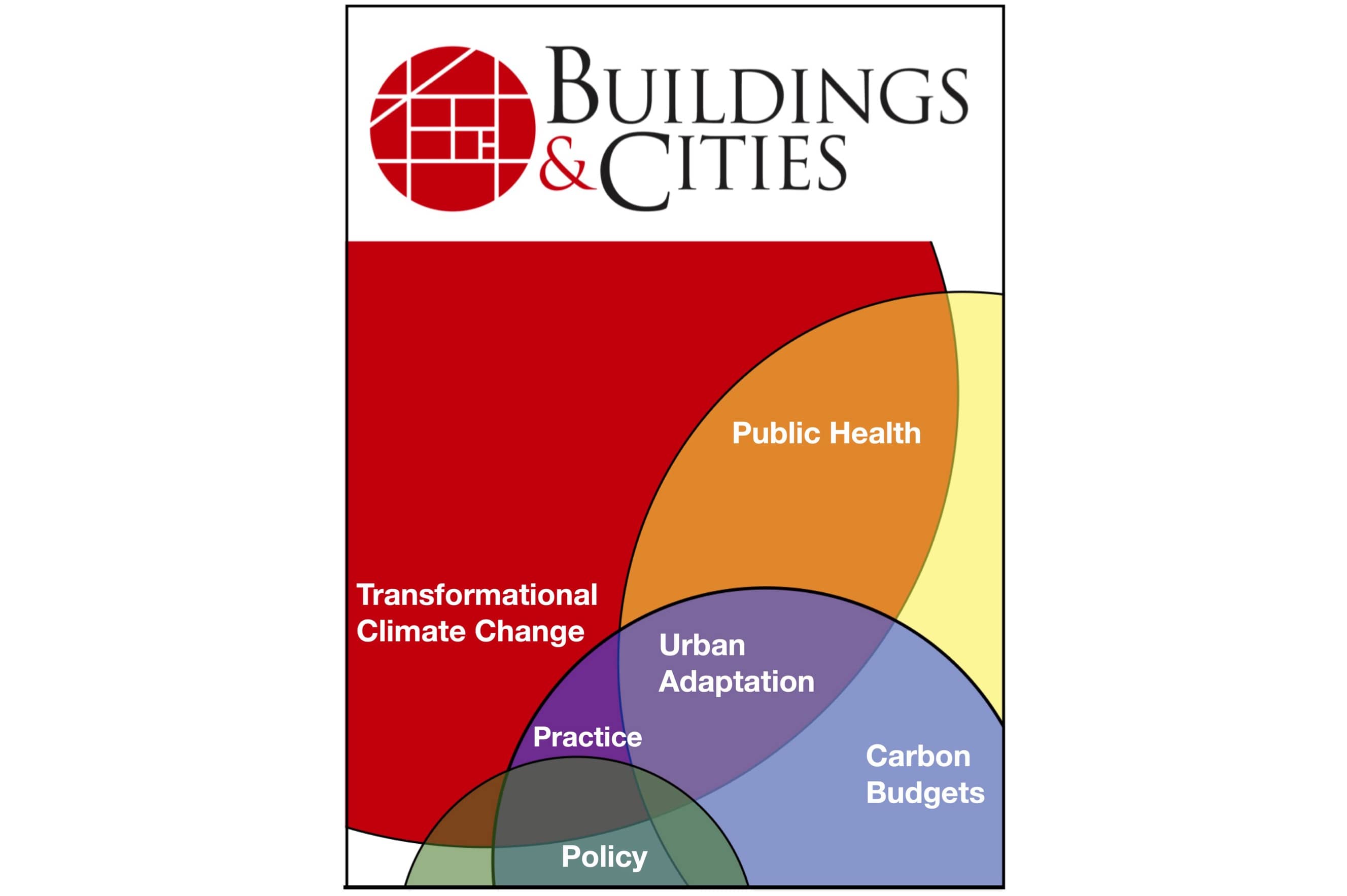
Research papers in B&C are being widely read
Buildings & Cities is pleased to announce that in 2024 our peer reviewed articles were viewed and downloaded 523,612 times from the journal's website.
The great interest shown here is an indicator of the journal's role as an important resource and as a valued contributor to the field.
More
Why a new approach to sustainable development is needed.
Alice Moncaster (University of the West of England) reflects on the lack of progress in sustainable development over several decades. This failure is argued to be linked to how sustainable development has been framed: the separation of technical issues from social justice and equity. Understanding, involving and empowering communities (and wider society) is the key to making progress and achieving sustainable development goals.
More
How building research can harness AI for mass decarbonisation
Ten years ago, it was rare to read building science papers referencing learning algorithms, sensor networks, cloud computing or digital twins. Now, data-driven techniques are at the core of building decarbonisation research, generating both new opportunities and new risks. Jenn McArthur (Toronto Metropolitan University) reflects on how the rise of artificial intelligence (AI) is transforming building decarbonisation research.
More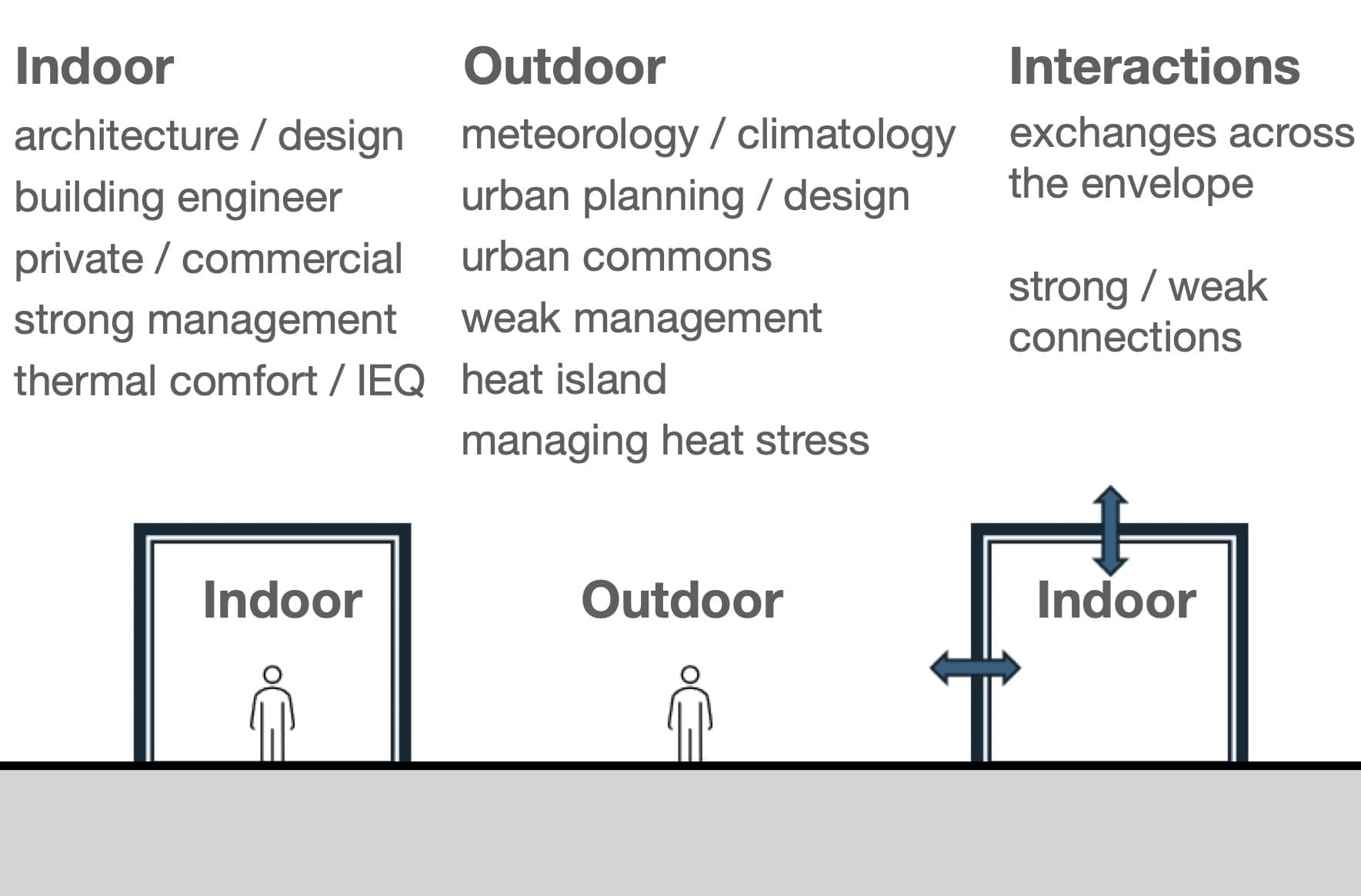
Understanding the interactions between urban form, outdoor and indoor spaces, and local climate requIres interdisciplinary interaction
Gerald Mills (University College Dublin) considers the big challenges for cities amid global climate change (GCC) and discusses the need for an inter-disciplinary approach among urban climate sciences to overcome obstacles. A distinction is made between global climate science, which focusses on Earth-scale outcomes, and urban climate science, which refers to processes and impacts at city-scales, including buildings, streets and neighbourhoods.
More
Why large cities will need to contract or be abandoned altogether
William E. Rees (University of British Columbia) explains why urbanisation has been a significant contributor to ecological overshoot (when human consumption and waste generation exceeds the regenerative capacity of supporting ecosystems) and climate change.1 Civil society needs to begin designing a truly viable future involving a 'Plan B' for orderly local degrowth of large cities.
More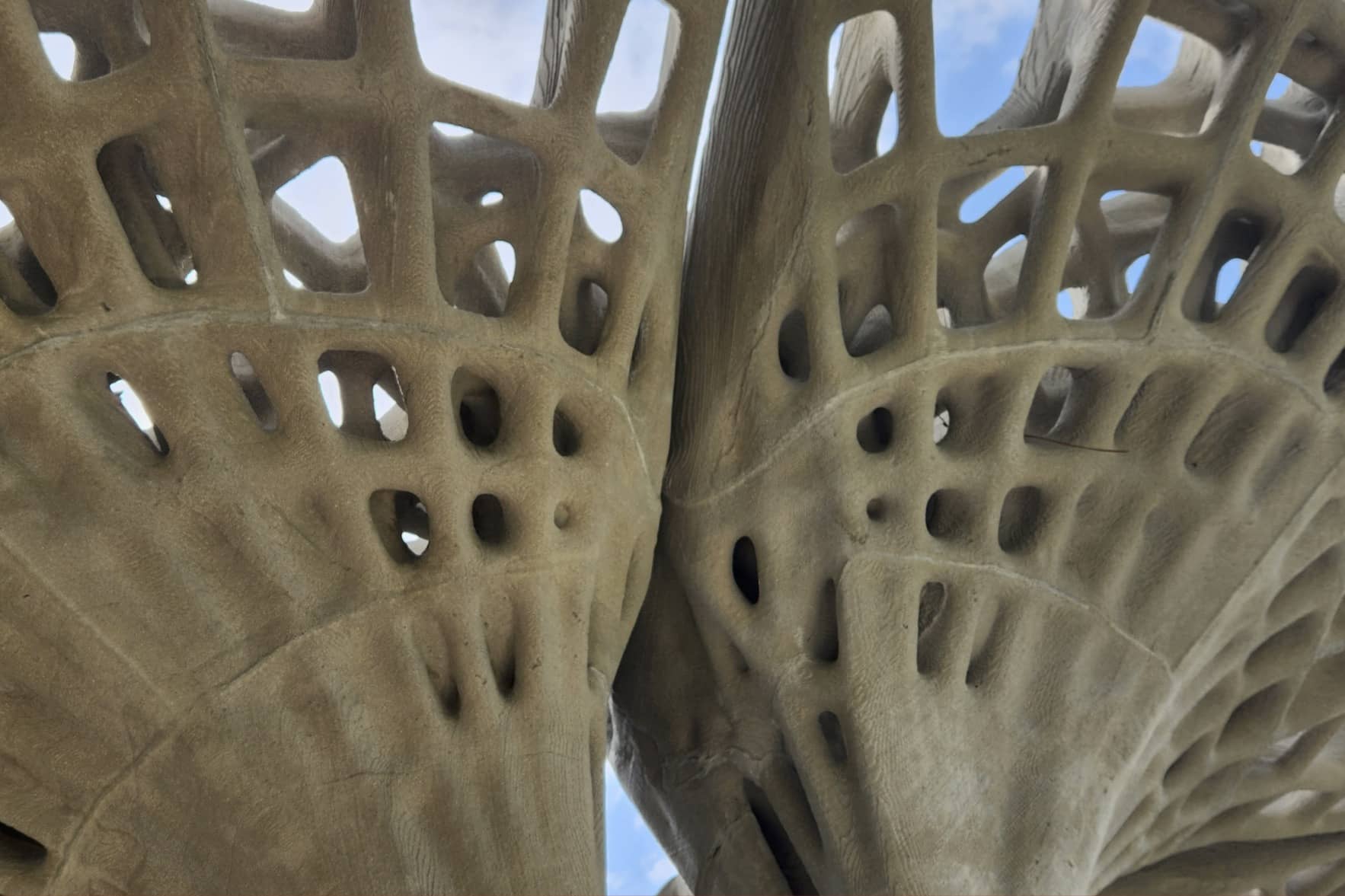
Why the next industrial revolution needs to be based on nature and not "technology"
Over the past 50 years the world has seen countless summits and agreements to reduce carbon emissions and prevent ecological overshoot. We have seen widespread adoption of the SDGs, a rapid shift to renewable energy, and numerous urban planning strategies to create biodiversity corridors, rewild rivers, and enable public and non-motorised transport options. However, appearances are deceiving. Chrisna du Plessis (University of Pretoria) considers the challenge of how to foster an ecological civilization in a world obsessed with technological innovation.
More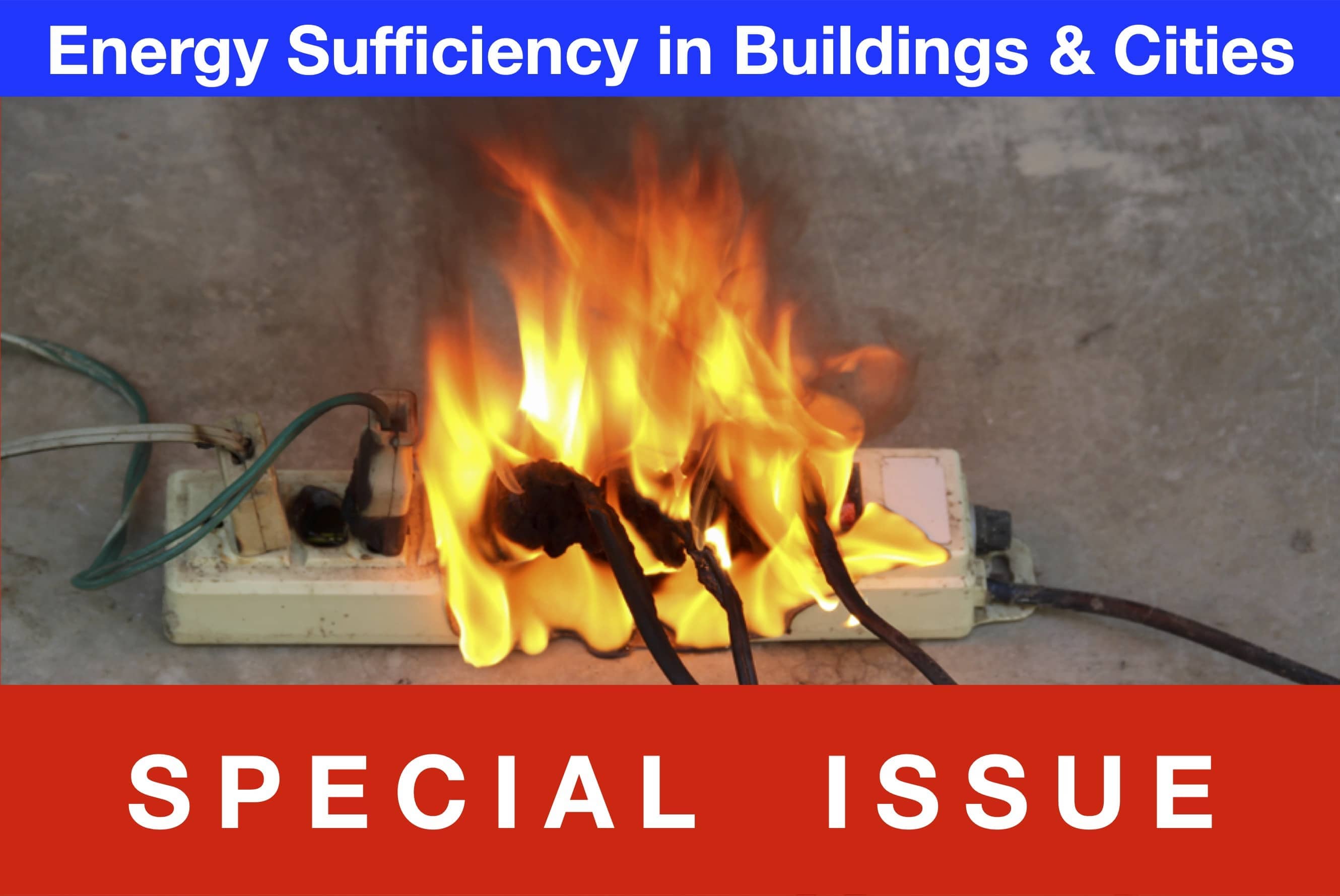
How can conditions be created for decent living standards for all without exceeding planetary limits?
Energy and climate policies have tended to focus on the promotion of energy efficiency and renewable energies, but there is no evidence that these measures alone will be able to meet climate and sustainable development goals. This special issue explores what the concept of sufficiency means for the built environment - both as a floor (minimum) and a ceiling (maximum) to ensure a "good life". Sufficiency is explored in many interconnected issues such as land use and density, space usage (size and adaptability), sharing of goods, services and spaces, and space conditioning (heating, cooling and ventilation) for health.
More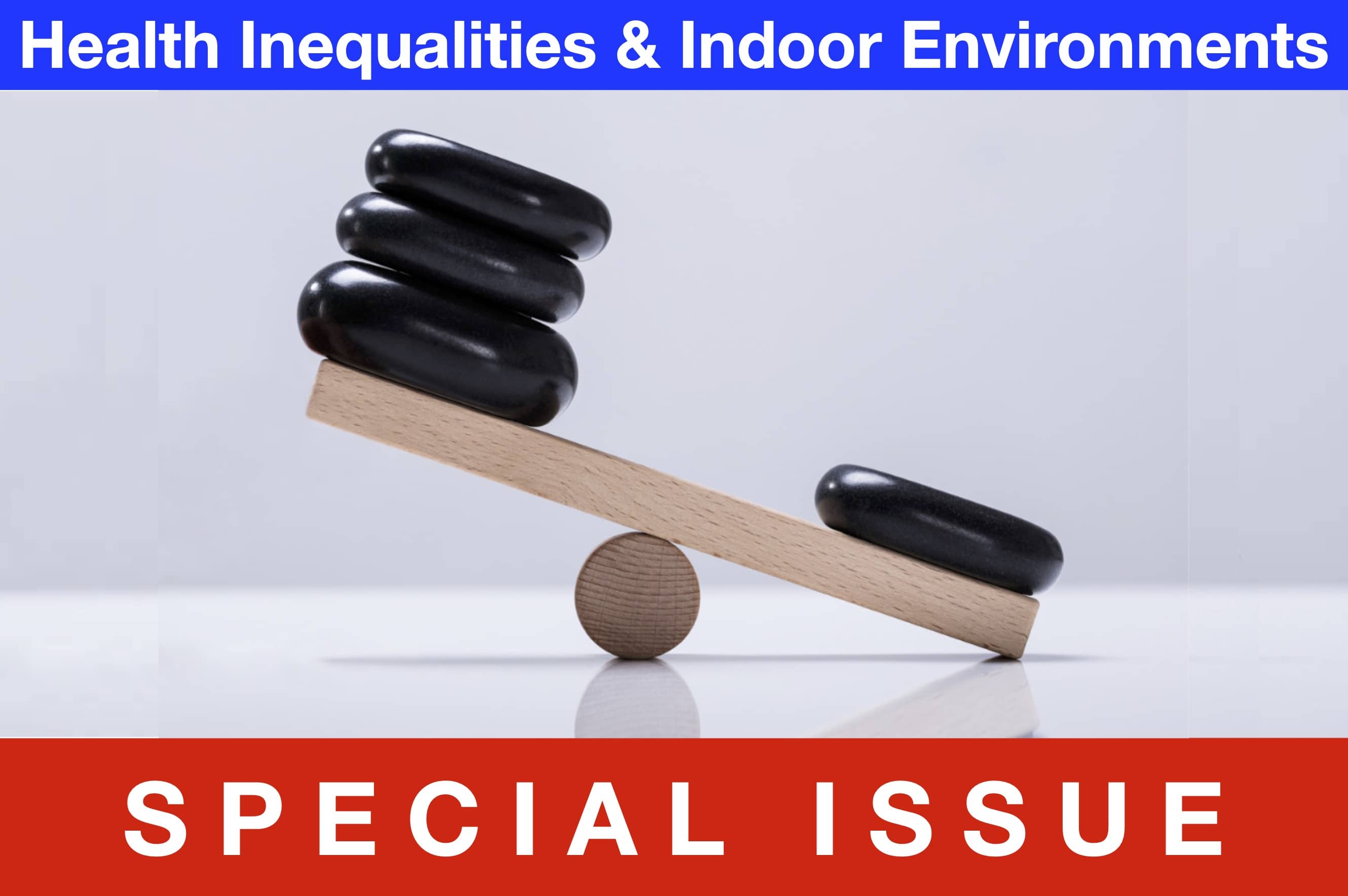
How do indoor environments affect health inequalities, inequities and injustice?
Health inequalities are a crucial aspect of public health and a pressing societal challenge. Access to healthy indoor spaces that are optimised to promote health should be seen as a fundamental right for all. This special issue is a starting point for the built-environment and public health communities to identify many existing inequities in order to improve methodological approaches, share vocabularies between disciplines, and create new knowledge necessary to create a safe and healthy indoor environments for all. Equitable design could translate into prioritising air quality improvements in the homes of people suffering from respiratory conditions, introducing inclusive design elements for disabled people, or providing energy retrofit subsidies to low-income, fuel-poor households.
More
Why a just transition to sustainable cities depends on quality, affordable housing
As city populations grow, a critical current and future challenge for urban researchers is to provide compelling evidence of the medium- and long-term co-benefits of quality, low-carbon affordable housing and compact urban design. Philippa Howden-Chapman (University of Otago) and Ralph Chapman (Victoria University of Wellington) explain why systems-based, transition-oriented research on housing and associated systemic benefits is needed now more than ever.
More
Why urban innovation is not enough to create sustainable cities
Andrew Karvonen (Lund University) explains why innovation has limitations for achieving systemic change. What is also needed is a process of unmaking (i.e. phasing out existing harmful technologies, processes and practices) whilst ensuring inequalities, vulnerabilities and economic hazards are avoided. Researchers have an important role to identify what needs dismantling, identify advantageous and negative impacts and work with stakeholders and local governments.
MoreEndorsements
Latest Peer-Reviewed Journal Content
Beyond the building: governance challenges in social housing retrofit
H Charles
Heat stress in social housing districts: tree cover–built form interaction
C Lopez-Ordoñez, E Garcia-Nevado, H Coch & M Morganti
An observational analysis of shade-related pedestrian activity
M Levenson, D Pearlmutter & O Aleksandrowicz
Learning to sail a building: a people-first approach to retrofit
B Bordass, R Pender, K Steele & A Graham
Market transformations: gas conversion as a blueprint for net zero retrofit
A Gillich
Resistance against zero-emission neighbourhood infrastructuring: key lessons from Norway
T Berker & R Woods
Megatrends and weak signals shaping future real estate
S Toivonen
A strategic niche management framework to scale deep energy retrofits
T H King & M Jemtrud
Generative AI: reconfiguring supervision and doctoral research
P Boyd & D Harding
Exploring interactions between shading and view using visual difference prediction
S Wasilewski & M Andersen
How urban green infrastructure contributes to carbon neutrality [briefing note]
R Hautamäki, L Kulmala, M Ariluoma & L Järvi
Implementing and operating net zero buildings in South Africa
R Terblanche, C May & J Steward
Quantifying inter-dwelling air exchanges during fan pressurisation tests
D Glew, F Thomas, D Miles-Shenton & J Parker
Western Asian and Northern African residential building stocks: archetype analysis
S Akin, A Eghbali, C Nwagwu & E Hertwich
Lanes, clusters, sightlines: modelling patient flow in medical clinics
K Sailer, M Utley, R Pachilova, A T Z Fouad, X Li, H Jayaram & P J Foster
Analysing cold-climate urban heat islands using personal weather station data
J Taylor, C H Simpson, J Vanhatalo, H Sohail, O Brousse, & C Heaviside
Are simple models for natural ventilation suitable for shelter design?
A Conzatti, D Fosas de Pando, B Chater & D Coley
Impact of roofing materials on school temperatures in tropical Africa
E F Amankwaa, B M Roberts, P Mensah & K V Gough
Acceptability of sufficiency consumption policies by Finnish households
E Nuorivaara & S Ahvenharju
Key factors for revitalising heritage buildings through adaptive reuse
É Savoie, J P Sapinski & A-M Laroche
Cooler streets for a cycleable city: assessing policy alignment
C Tang & J Bush
Understanding the embodied carbon credentials of modern methods of construction
R O'Hegarty, A McCarthy, J O'Hagan, T Thanapornpakornsin, S Raffoul & O Kinnane
The changing typology of urban apartment buildings in Aurinkolahti
S Meriläinen & A Tervo
Embodied climate impacts in urban development: a neighbourhood case study
S Sjökvist, N Francart, M Balouktsi & H Birgisdottir
Environmental effects of urban wind energy harvesting: a review
I Tsionas, M laguno-Munitxa & A Stephan














Latest Commentaries
Lessons from Disaster Recovery: Build Better Before
Mary C. Comerio (University of California, Berkeley) explains why disaster recovery must begin well before a disaster occurs. The goal is to reduce the potential for damage beforehand by making housing delivery (e.g. capabilities and the physical, technical and institutional infrastructures) both more resilient and more capable of building back after disasters.
Will NDC 3.0 Drive a Buildings Breakthrough?
To achieve net zero GHG emissions by mid-century (the Breakthrough Agenda) it is vital to establish explicit sector-specific roadmaps and targets. With an eye to the forthcoming COP30 in Brazil and based on work in the IEA EBC Annex 89, Thomas Lützkendorf, Greg Foliente and Alexander Passer argue why specific goals and measures for building, construction and real estate are needed in the forthcoming round of Nationally Determined Contributions (NDC 3.0).